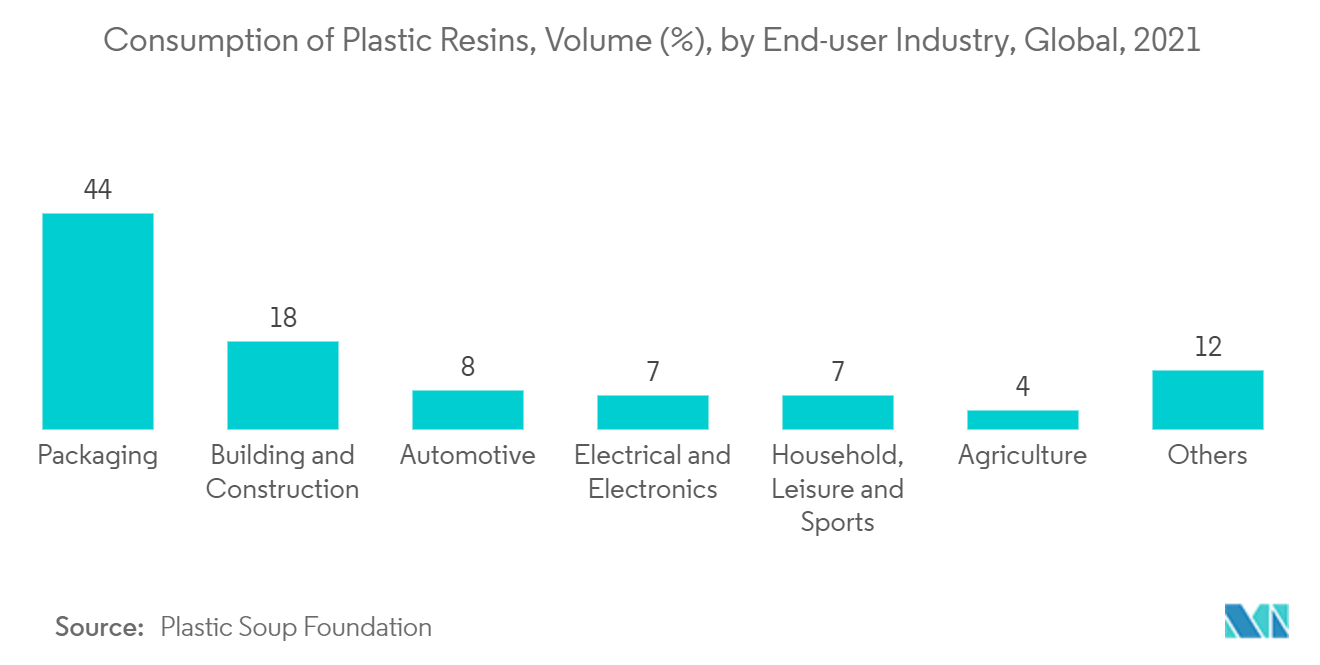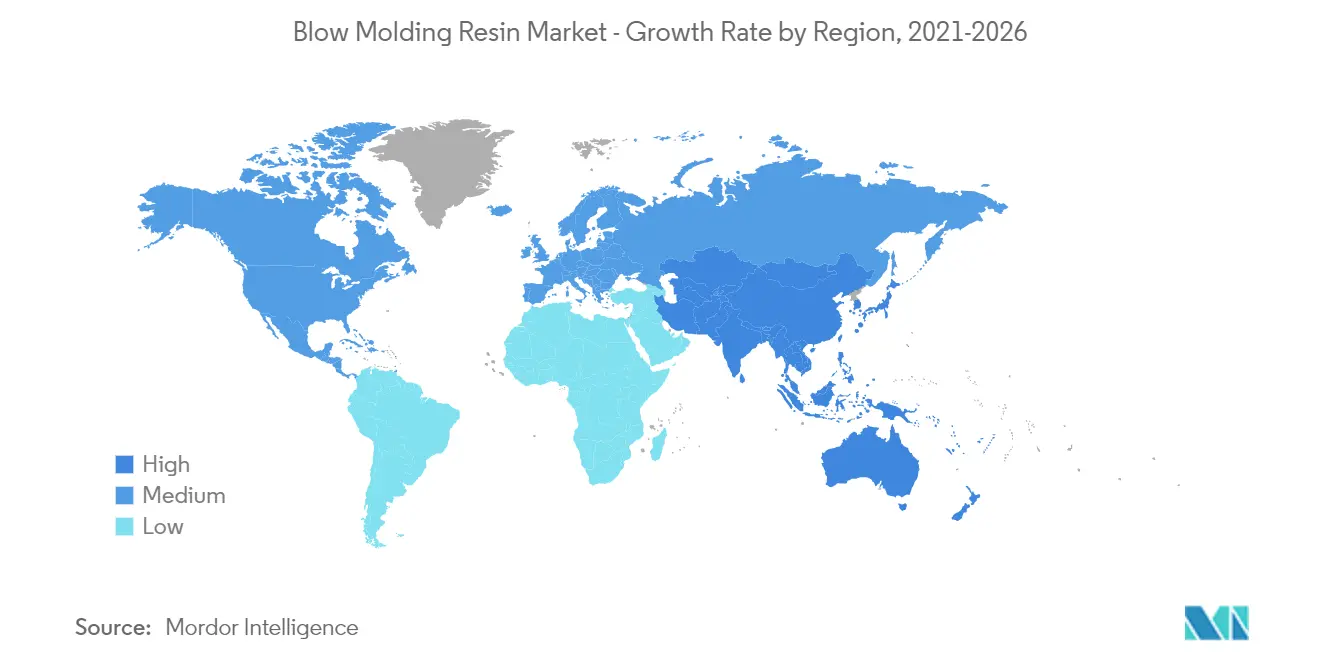Market Trends of Blow Molding Resin Industry
Growing Demand from Packaging Segment
- Blow molding resins, such as polyethylene, polyethylene terephthalate, etc., are widely used to manufacture bottles and containers for various applications, ranging from shampoo bottles to industrial drums.
- Due to their transparency, stiffness, excellent melt strength, processability, and environmental stress-crack resistivity, these resins are widely used to manufacture blow-molded products, which are further used in several packaging applications. In 2021, an estimated 583 billion plastic bottles were produced.
- According to PMMI (The Association for Packaging and Processing), the North American beverage packaging industry is expected to increase by 4.5% from 2018 to 2028, with the United States leading the beverage packaging sector.
- According to Plastic Soup Foundation, the amount of plastic produced worldwide every year has to be over 390 million tons in 2021. The production is expected to reach about 1480 million tons by 2050.
- In 2021, the United States produced 123.9 billion pounds of resins. High-density polyethylene (HDPE) was the most produced resin in 2021, with an output of 22 billion pounds. Linear low-density polyethylene (LLDPE) accounted for a nearly similar production volume, at 21.7 billion pounds.
- PP is perhaps the most used plastic resin globally. The plastic has good chemical and electrical resistance, hardness, high melting point, stress resistance, and high elasticity. Therefore, it is considered an essential resin type in the construction industry.
- The U.S. federal government plans to invest USD 2 trillion over 10 years for infrastructure development. A low-risk environment, a stable economy, and a robust financial sector characterize the country. These factors have provided many opportunities for investors in recent years, which are likely to trigger infrastructure spending in the country.
- Bottle production is rising rapidly in almost all nations due to the hectic lifestyles among consumers, which have fueled the demand for on-the-go beverages. According to industry estimates, bottles and containers comprise 53% of high-density polyethylene (HDPE) products.
- Therefore, the growing packaging industry is expected to fuel the demand for blow molding resin globally through the years to come.

Asia-Pacific to Dominate the Market
Asia-Pacific is expected to dominate the global market owing to huge demand from countries such as China and India.
The revenue of the global construction industry is expected to grow steadily over the next few years and reach USD 4.4 trillion by 2030. China is investing USD 1.43 trillion in major construction projects in the next five years till 2025. According to National Development and Reform Commission (NDRC), the Shanghai plan includes an investment of USD 38.7 billion in the next three years. In contrast, Guangzhou signed 16 new infrastructure projects with an investment of USD 8.09 billion.
The packaging industry in China is expected to witness tremendous growth, and it may record a CAGR of nearly 6.8% to reach USD 0.3 trillion by 2025. This positive momentum in the packaging industry is expected to ignite market demand.
The India Packaging Market is the fifth largest sector. It is expected to reach USD 204.81 billion by 2025, registering a CAGR of 26.7% from 2020 to 2025, according to the Packaging Industry Association of India (PIAI).
Additionally, The construction sector in the country is among the fastest-growing in the world, largely driven by the investments embarked on by the country's infrastructure sector. Initiatives such as the 'Housing for All' and 'Smart City Mission' are expected to drive the construction sector in the country and thereby increase the demand for blow-molded products in the industry.
China has numerous airport construction projects in the development or planning stage. These include Beijing Capital International Airport, Chengdu Shuangliu International Airport, Guangzhou Baiyun International Airport, etc. Additionally, the government rolled out massive construction plans to move 250 million people to its new megacities over the next 10 years.
The electric vehicle industry in South Korea is expected to grow rapidly. In 2021, nearly 71,000 units of electric vehicles were sold in the country. South Korean sales of electric vehicles surged by 96% to 71,006 units in the first nine months of 2021, according to data collected by the Korea Automotive Technology Institute (KAII). The sales figure is expected to increase with the growing demand from the importing economies in Europe, Asia-Pacific, and the Americas.
Thus, the abovementioned factors are expected to impact the market in the coming years significantly.


